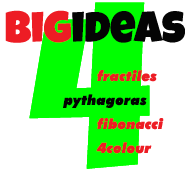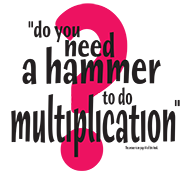CURRiCULUM
WHAT are we educating our students for?
WHAT is the purpose of Education?
Every once in a while you come across a story, that nails it.
On June17, 1744, Commissioners from the English colonies of Maryland and Virginia negotiated a treaty with the Indians of the Six Nations at Lancaster, Pennsylvania. As part of the deal the Indians were invited to send boys to school at William and Mary College.
The Indians replied
".....if the Gentlemen of Virginia will send us a Dozen of their Sons, we will take care of their Education, instruct them in all we know, and Make Men of them."
The Commissioners offered "to send the boys to school".
For the Indians there was a point a purpose to the education, it was
"to Make Men of them."
The Indians needless to say declined the Commissioners offer saying
"Several of our young People were formerly brought up at the Colleges of the Northern Provinces: they were instructed in all your Sciences; but, when they came back to us, they were bad Runners, ignorant of every means of living in the woods . . . neither fit for Hunters, Warriors, nor Counsellors, they were totally good for nothing."
Printed Copy of the Indian Treaty Between the Provinces of Maryland and Virginia and the Six Nations Held at Lancaster, Pennsylvania (Courtesy of the US National Archives)
NAIL IT
If Education had a single purpose, point, aim, then selecting suitable curriculum to teach would be easy. Sending students to school, to educate them, to teach them, to help them reach their potential, are not good enough aims. None of these can, effectively direct curriculum choice.
WE NEED TO NAIL THIS ONE
We need as a community, as professionals, to work out an aim for everything, a single guiding aim which provides a purpose for teaching. Currently curriculum is based around "the disciplines", an arbitrary division of knowledge that occurred with reasonable rigor well over 100 years ago. They have no real relationship to how students learn, what knowledge is important and they don't encompass all knowledge.
What should the young be taught?
How to make sense of the human condition.
And should follow along these lines
What's happening?
To what or whom?
Where?
When?
Why?
The type of questions toddlers ask constantly, the questions that come naturally, and form the basis of how we learn best.
WHAT SHOULD THE AIM BE?
The aim should be to provide students with the skills they will need to live as positive happy productive, functioning adults, who understands their relationship to society and value in it. Who understand that their actions have an impact on the society in which they live. Who understand how that society works. All life is linked.
WELL you might say - this is a pretty unwieldy aim Cathy, and you would be right - this needs a great deal of discussion.
BUT immediately allows a close examination of the current curriculum. It defines what can be removed from the curriculum, areas of study which aren't essential to the functioning of a student or future adult in our society.
There needs to be one core basic curriculum that encompasses all Seymour Papert's "Driveresque" knowledge - Knowledge that is essential. And the disciplines become specialized optional areas of "Latinesque" knowledge - Knowledge that is non essential , which students can choose to study according to their own interests. This would essentially free teacher's of cumbersome curriculum overload and allow them to work with students on the more important areas in greater depth and detail.
So you could loose immediately, algebra, long division, and concentrate on a lot more of what is currently called consumer maths in the general course. Offering more specialized maths in elective courses.
Learning to read, and write is essential, but also, to, are speaking, social relations, how organizations such as schools work, and the relationships within them, learning to make decisions, what things interest you, what it it is like to work, and what jobs are of interest.
Text books, with their third and fourth hand information would be redundant as students studied reality, starting in primary school with the social organization with which they are most familiar there own school.
Applying the
What"s happening?
To what or whom?
Where?
When?
Why
questioning techniques to new and old situations.
Here is a beginning, what do you think? It's time for a change, to restructure
This kind of zig is long overdue in education.
Excerpts and Inspiration, and Quotes taken from A Seamless Curriculum*
Painting from Pixabay.com by Charles Marion Russell, who was an American artist of the American Old West.
He created more than 2,000 paintings of cowboys, Native Americans, and landscapes.
© Cathy Brown 1998 - 2025 © All images & Videos Cathy Brown Located in Sydney NSW Australia all rights reserved.
No unauthorised reproduction without written permission. Webmaster & Designer - Cathy L. Brown
Virtual Teacher is committed to ensuring that our AI systems & assistants are used responsibly & ethically. Our AI is designed to support educators & students by providing personalized learning experiences, enhancing engagement & promoting understanding. We prioritize the safety, privacy, & security of our users, ensuring that our AI tools operate transparently & align with the best practices in the industry.
The NSW AI AssessmentFramework requires self assessment to deterimin Determine whether your system / project should use the AIAF. All AI projects used by Virtual TEacher are Low Risk or No Risk applications. Check out the Risk Evaluation page attached.


